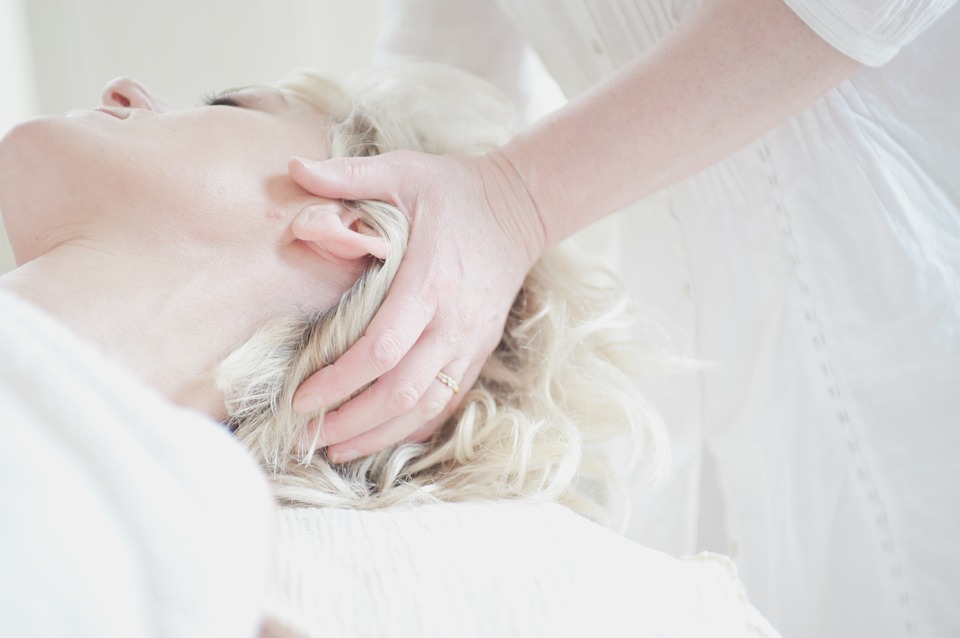It is no secret that women going into perimenopause can find it increasingly difficult to relax, rest and get a good night’s sleep.
The natural fluctuations in the reproductive hormones estrogen and progesterone can cause a number of troublesome physical, mental and emotional health symptoms.
In this article, learn about the top 10 relaxation techniques for menopause that are known to support increased relaxation during perimenopause and into the postmenopausal years.
Top 10 Relaxation Techniques for Menopausal Women
“Laughter can stimulate the immune system and may in part help to reverse the impact of perimenopause on immune function and thus ease systemic tension and stress.”
These top 10 relaxation techniques for menopause all come highly recommended by researchers and women.
1. Paced respiration
Paced respiration is a specific breathing pattern that is linked to improving relaxation during hot flashes.
To do paced respiration, sit comfortably in a chair or on the floor so that your back remains straight. Inhale to a count of four, hold for one second, then exhale for a count of four. Do this for 15 minutes when you feel a hot flash starting.
2. Laugh it off

While this suggestion may sound like researchers are making light of the very serious impact menopausal symptoms can have on your life, the truth is that laughter really does help you relax.
Laughter can also stimulate the immune system and may in part help to reverse the impact of perimenopause on immune function and thus ease systemic tension and stress.
3. Progressive muscle relaxation
Progressive muscle relaxation is a relaxation technique that can help reduce body-wide stress associated with cramping, hot flashes, mood swings, irritability and other symptoms.
You can start either at the top of your head or at your feet. Systematically tighten and then release each muscle group in turn until you have done them all, then sit or lay quietly and enjoy the peace.
“exercise triggers your brain to release endorphins which are reliable mood-lifters. And as your mood lightens, your stress level often reacts similarly.”
4. Meditate
Meditation actually encompasses a number of different techniques for stilling the mind, quieting or focusing the thoughts and de-stressing.
Meditation may be particularly helpful if you find your thoughts racing as you worry about your symptoms or wonder if they will ever end. Mindfulness meditation, where you simply sit and observe your thoughts without interacting with or reacting to them, can be particularly beneficial.
5. Exercise
It is true that exercise may be the last thing you feel like doing when you are under onslaught from menopausal symptoms.
But exercise triggers your brain to release endorphins which are reliable mood-lifters. And as your mood lightens, your stress level often reacts similarly.
6. Massage

One research study investigated the impact of massage on symptoms of insomnia during perimenopause and postmenopause.
The study found that therapeutic massage significantly improved quality and quantity of sleep in research participants.
7. Eat more carbohydrates
Just the idea that you can actually add carbs back to your diet may be enough to make you feel happier.
But here, research says the key is to choose the right carbs – in this case, complex grains with lots of fiber, such as whole grains, popcorn, whole wheat pasta and quinoa are best for boosting serotonin, a mood-lifting neurotransmitter.
“Sleep is nature’s greatest healer. When you sleep, the body can repair itself on every level.”
8. Do yoga
One research study found that yoga was as impactful as other relaxation techniques for relief of menopausal symptoms.
9. Get out in the sun
Not only can spending time in the sun simply feel good, but it can also boost your body’s production of vitamin D which tends to steadily decline in the postmenopausal years.
Alternately, eat more foods with vitamin D or use a supplement.
10. Sleep
Sleep is nature’s greatest healer. When you sleep, the body can repair itself on every level. As a bonus, the other nine techniques on this list will also likely improve your quality and quantity of sleep.
How to Incorporate These Into Your Daily Lifestyle?

While you can do these menopause relaxation techniques as needed, you will likely experience the best results by picking at least one or two techniques and making a point of using them daily.
Finding the right menopause relaxation techniques can take some time and experimentation. Happily, any of these techniques you try is likely to offer at least some benefit!
Sources & References:
https://www.menopause.org/docs/default-document-library/tfprelax_eng.pdf?sfvrsn=0
https://www.webmd.com/menopause/guide/learning-relax-during-menopause#1
https://www.everydayhealth.com/menopause/ways-to-relax-during-menopause.aspx
https://www.ncbi.nlm.nih.gov/pmc/articles/PMC3059875/
https://www.ncbi.nlm.nih.gov/pmc/articles/PMC4728667/
https://pdfs.semanticscholar.org/20a0/221e7f2fca3e8d9108146404cbe9a686f37c.pdf
https://www.healthline.com/nutrition/11-natural-menopause-tips





















